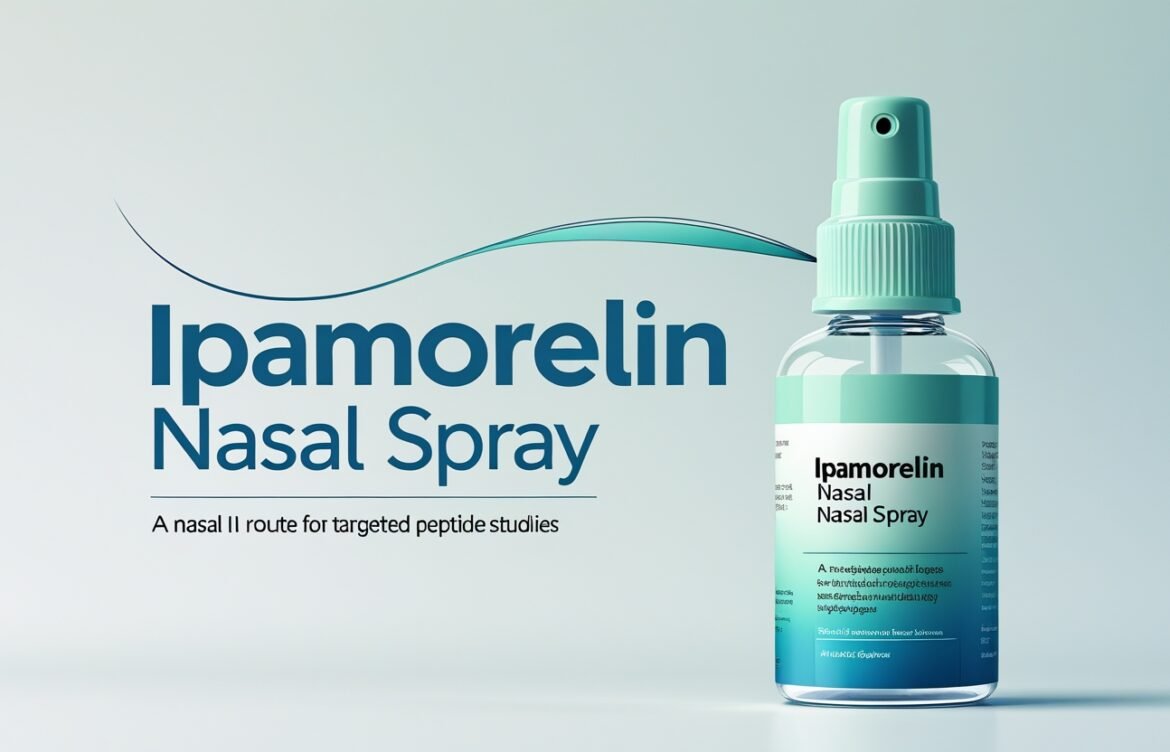
Ipamorelin Nasal Spray: A Nasal Route for Targeted Peptide Studies
Advancing Peptide Research Through Nasal Delivery Systems
Ipamorelin nasal spray has emerged as a groundbreaking delivery format in the field of peptide research. By bypassing gastrointestinal degradation and first-pass liver metabolism, the nasal route enables more efficient absorption of peptides into systemic circulation. This administration method offers promising advantages for researchers aiming to study the pharmacokinetics and targeted bioactivity of growth hormone secretagogues such as Ipamorelin. Due to its receptor-selective activity and minimal interaction with cortisol or prolactin pathways, Ipamorelin stands out as a preferred option for investigative use. For properly conducted in-vitro and animal-based studies, professionals often begin with verified Peptides for sale to ensure compound purity and research integrity.
By leveraging nasal spray technology, researchers can analyze Ipamorelin’s effect on pulsatile GH release without relying on invasive delivery methods or inconsistent oral routes. This allows for reproducible study outcomes while minimizing external variables. Early data suggests a peak in GH levels within 15 to 30 minutes post-administration, supporting the hypothesis that nasal absorption delivers both speed and efficacy in controlled peptide study environments.
Pharmacological Profile and Selectivity of Ipamorelin
Ipamorelin is classified as a selective ghrelin receptor agonist that mimics endogenous ghrelin’s impact on growth hormone release from the anterior pituitary. Unlike other secretagogues that can overstimulate the HPA axis or induce hunger, Ipamorelin maintains a highly targeted action, making it ideal for focused endocrine investigations. Its affinity for the GHSR-1a receptor is strong, yet it avoids downstream interaction with ACTH and cortisol—a common drawback in earlier peptides like GHRP-6.
The ability to administer Ipamorelin intranasally adds a new dimension to this selectivity, enhancing the compound’s precision and reducing metabolic breakdown. When researchers acquire Ipamorelin Nasal Spray for sale from certified suppliers, they gain access to formulations that align with study protocols focused on dose accuracy and delivery reliability.
Enhanced Bioavailability via the Intranasal Pathway
Nasal administration allows Ipamorelin to bypass enzymatic breakdown in the gastrointestinal tract, resulting in superior bioavailability compared to oral or even subcutaneous methods. The nasal mucosa’s thin epithelial lining and dense capillary network provide a direct pathway into systemic circulation, ensuring rapid absorption. This makes the nasal spray particularly suitable for time-sensitive studies on acute hormone responses, circadian influence on GH secretion, or short-duration peptide cycles.
Studies using radiolabeled tracers have confirmed the efficiency of peptide absorption through this route, showing measurable blood plasma concentrations shortly after application. In turn, this supports a more predictable and steady GH response, beneficial for research involving muscle recovery, sleep quality, cellular regeneration, and metabolic rate.
Minimizing Invasive Techniques in Laboratory Protocols
One of the key benefits of Ipamorelin nasal spray is its ability to streamline research procedures by eliminating needles and reducing animal stress. In repeat-dose trials, this contributes to a more humane study design while improving consistency across data sets. In comparative studies between injectable and intranasal delivery of secretagogues, nasal application has shown equal or better performance in terms of biomarker activation with fewer side effects and easier administration logistics.
This delivery method also simplifies dosing frequency adjustments, allowing researchers to fine-tune their protocols without compromising compound stability or requiring extensive equipment. Nasal peptide solutions are formulated with stabilizing agents that protect the active sequence and maintain potency throughout the study cycle.
Safety Parameters and Storage Considerations
Ipamorelin’s safety profile is well-documented in scientific literature, with most adverse effects limited to transient local irritation when delivered via the nasal route. Nonetheless, it is imperative that researchers maintain strict environmental controls during storage—refrigeration between 2°C and 8°C is recommended for preserving the compound’s structural integrity and potency. Protecting the solution from light, contaminants, and repeated exposure to air further ensures experimental reliability.
When assessing peptide stability, routine quality checks and batch verification through certificates of analysis can validate compound identity. With these standards in place, researchers can reduce the margin of error and avoid compromising study endpoints due to degradation or contamination.

tlovertonet
November 1, 2025I’ve been exploring for a bit for any high-quality articles or blog posts on this kind of area . Exploring in Yahoo I at last stumbled upon this website. Reading this info So i’m happy to convey that I have an incredibly good uncanny feeling I discovered just what I needed. I most certainly will make sure to don’t forget this site and give it a glance on a constant basis.
xn88 gaming
November 27, 2025Với ba tiêu chí phát triển là “Công bằng – Công khai – Hợp pháp”, ưu đãi 188v hứa hẹn sẽ mang tới cho bạn những trải nghiệm giải trí tuyệt đỉnh. Đăng ký hội viên mới, tân thủ không chỉ được thưởng lớn 100% tiền gửi lần đầu, mà còn có cơ hội “đầu tư kiếm lời” với tỷ lệ cược lô đề 1 ăn 99.8 độc quyền hiện nay.
modastoreaustralia
December 4, 2025Great article! Pain management is a serious issue for many workers, and medications like Tapentadol can help when prescribed by a doctor. Anyone looking toOrder Tapentadol Tablets should make sure they follow Australian prescription laws and consult a qualified healthcare professional first.
88gobet8
December 26, 2025Heard some buzz about 88gobet8. Thinking of checking it out for some weekend fun. The layout looks promising. Thoughts? Join me 88gobet8, let’s have some fun!